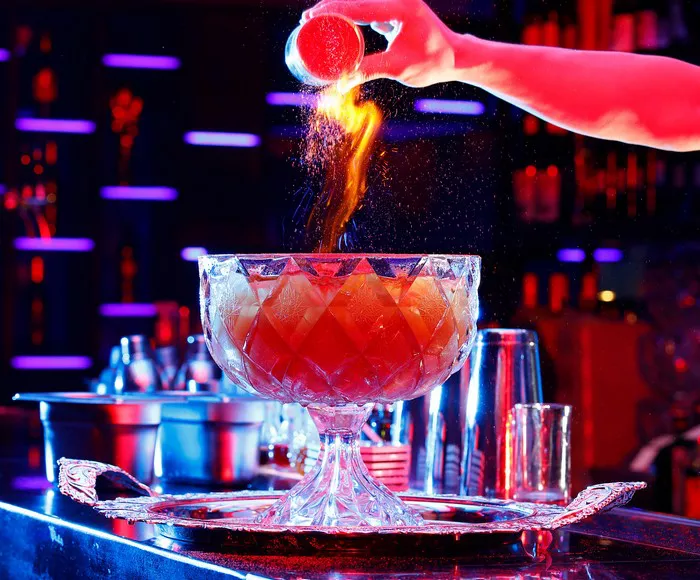Cocktails, the epitome of sophistication and craftsmanship in mixology, encompass an extensive spectrum of flavors, aromas, and textures. The beauty of crafting cocktails lies in the diverse methods employed by mixologists worldwide. From shaking and stirring to muddling and layering, the techniques used to concoct these libations are as varied as the drinks themselves. Let’s delve into the fascinating world of mixology to unravel just how many types of cocktail methods are there.
The fundamental processes used in making cocktails are as diverse as the beverages themselves. Each technique contributes distinct characteristics to the final drink, elevating the experience for the imbiber. Exploring these methods unveils a myriad of possibilities, showcasing the creativity and artistry behind cocktail-making. So, just how many types of cocktail methods are there, and what makes each one unique?
Shaking
One of the most recognizable techniques in mixology, shaking involves combining ingredients in a cocktail shaker with ice and vigorously shaking to chill, dilute, and blend the components. This method, often associated with cocktails like the Margarita or the Daiquiri, not only cools the drink rapidly but also introduces aeration and a pleasing texture. However, the duration and intensity of shaking can significantly impact the final result, influencing both taste and mouthfeel.
Stirring
Contrary to shaking, stirring cocktails involves gently mixing the ingredients in a mixing glass or stirring vessel with ice using a bar spoon. This method is favored for drinks that require a delicate touch, such as the Martini or the Manhattan. Stirring maintains a smooth, crystal-clear appearance while properly chilling the drink without overly agitating it. The technique requires finesse and control to achieve the desired balance and temperature.
See Also: What’s in a Thorn Cocktail?
Muddling
Muddling entails pressing and twisting ingredients, typically fresh fruits, herbs, or sugar cubes, with a muddler in the bottom of a glass. This method releases essential oils, flavors, and aromas, enhancing the drink’s profile. Cocktails like the Mojito and the Old Fashioned rely on muddling to extract maximum essence from the ingredients. Mastering muddling techniques is crucial to avoid bitterness from over-extraction or underwhelming flavors from inadequate muddling.
Layering
A visually captivating technique, layering involves delicately floating different-colored liquids on top of each other to create distinct layers within the same glass. Cocktails like the Pousse-Café showcase this method, where various liqueurs with differing densities are carefully poured over the back of a spoon to create defined layers. Achieving perfect layers requires an understanding of liquid densities and a steady hand to pour each component precisely.
Building
The simplest method, known as building, involves layering ingredients directly into the serving glass without the use of shakers or mixing vessels. Cocktails like the Highball or the Spritz rely on this straightforward technique, making them accessible for both amateur enthusiasts and seasoned bartenders. Despite its simplicity, proper ingredient order and careful pouring are crucial to maintain balance and presentation.
Infusing and Fat-Washing
Infusing spirits with flavors or fat-washing involves incorporating additional elements into the base alcohol to impart unique tastes. Infusions can range from fruit-infused vodkas to herb-infused gins, while fat-washing introduces savory or oily components like bacon or butter into spirits. These methods expand the repertoire of flavors available to mixologists, allowing for innovative and distinctive cocktails.
Carbonation and Smoking
Carbonation and smoking techniques add intriguing dimensions to cocktails. Carbonation involves the introduction of carbon dioxide to effervesce the drink, as seen in carbonated cocktails or the classic Gin and Tonic. Smoking infuses cocktails with smoky aromas by exposing the liquid to smoke from wood chips or herbs, lending depth and complexity to the final beverage.
Aging and Barrel-aging
Aging cocktails in barrels or other vessels allows for the integration of flavors over time. Barrel-aged cocktails, like the Negroni or the Boulevardier, develop nuances from the wood, creating a mellower, smoother taste with enhanced complexity. The aging process imparts flavors that cannot be achieved through immediate mixing, offering a unique drinking experience.
In conclusion
the world of mixology is a vast landscape of creativity, craftsmanship, and technique. The art of cocktail-making encompasses a multitude of methods, each contributing distinct qualities to the final libation. From shaking and stirring to muddling, layering, and beyond, the variety of cocktail methods allows mixologists to continuously innovate and create memorable drinking experiences. So, how many types of cocktail methods are there? Countless, each adding its own touch of flair and finesse to the world of mixology. Cheers to the endless possibilities that await in the realm of cocktails!


